by Carrie Stevenson | Apr 21, 2014
As spring commences and young wildlife of all species are born, everyone’s favorite flying, furry mammal also begins roosting season. Ideally, bats will find shelter in trees, caves, abandoned buildings, and bat houses, but sometimes they end up in a home. I receive calls often about how to best remove or exclude a group of bats living in an attic or garage. While there are countless benefits (most notably, efficient insect control) to having bats in one’s landscape or neighborhood, most people prefer they not share their own home with them. However, due to their slow reproductive cycle and declining populations in the United States, it is illegal in Florida to prevent bats from returning to any roosting location from April 16 to August 14. Female bats typically give birth during maternity season to one pup (or rarely, two), which will cling to the mother’s fur to nurse for their first few weeks and months of life. Being nocturnal, this means mothers and babies will be inside a dwelling during the day. Typically, if a homeowner is trying to exclude bats from a home, they will put up netting or seal up a hole in an attic entry in the evening after bats have flown off to feed on insects at night. However, if this is done during roosting season, young bats left back in the roost while mothers are hunting can get trapped inside a building and will not survive.
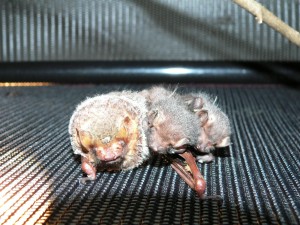
A rare set of twin Seminole bat pups with their mother. Photo credit: Carrie Stevenson
This obviously has the potential to cause conflict between homeowners and the bat population. The Florida Fish & Wildlife Conservation Commission has regulatory oversight for bat-related issues, and they will work with citizens to arrange a positive outcome for both the property owner and the animals involved.
Bat populations are declining in North America due to a devastating disease called white-nose syndrome and loss of habitat. However, you can help these fascinating animals by installing a bat house in your yard. Keep in mind that bats attracted to bat houses prefer to be in open areas away from trees (where their predators hide), and the house should be installed at least 12 feet in the air. Bat houses can be purchased or built rather simply—keep an eye out for Extension workshops near you, or visit this UF Wildlife Ecology publication or Bat Conservation International’s website for simple instructions.
To learn more about bats and how to help them, visit this website or contact me or your local County Extension office!
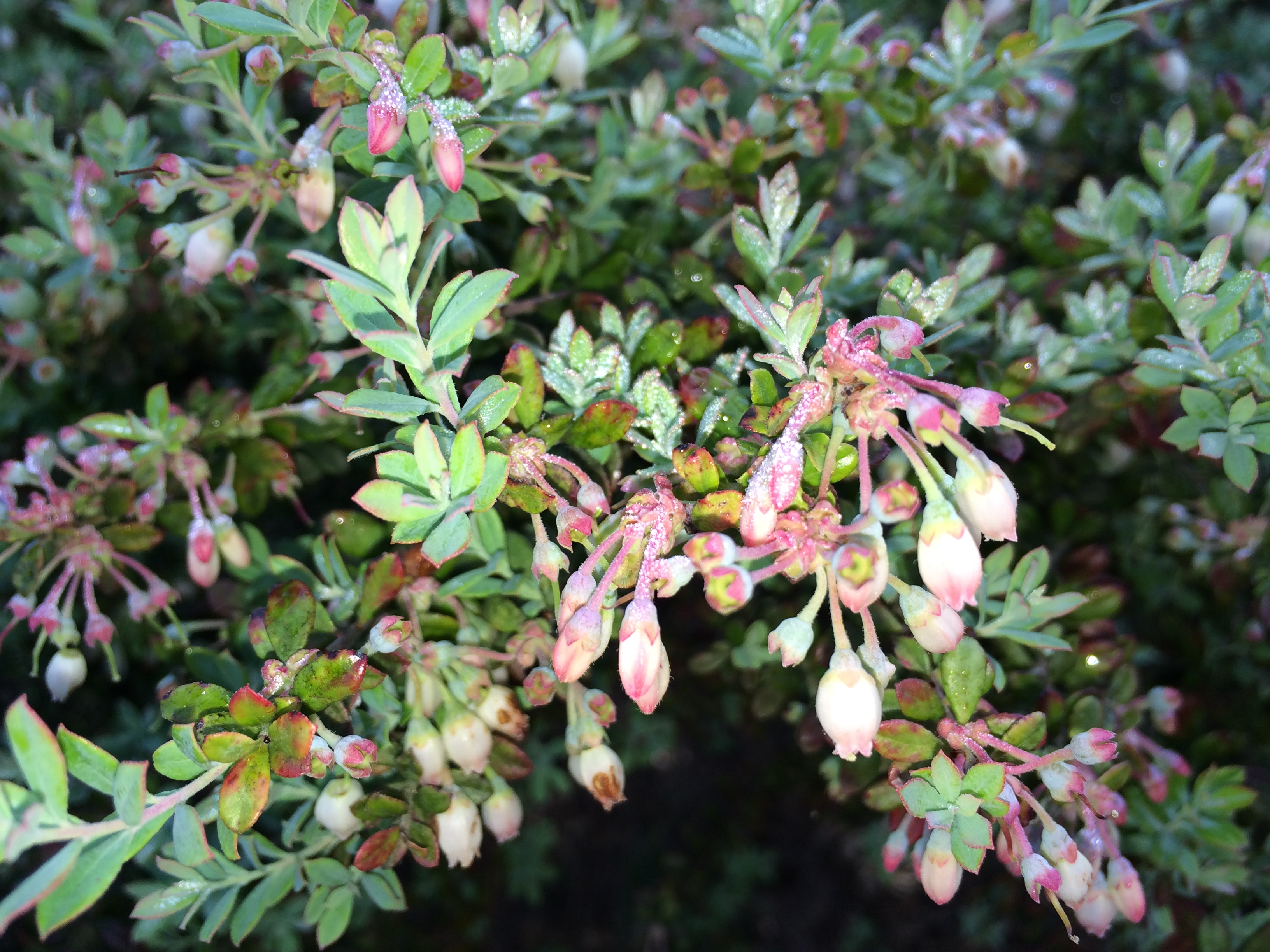
by Mary Salinas | Apr 15, 2014
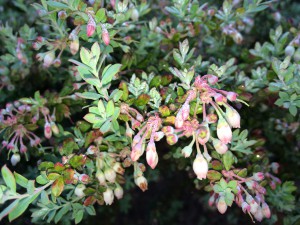
Darrow’s Blueberry with spring blooms. Photo credit Mary Derrick UF IFAS.
A blueberry bush as a landscape shrub?
Yes! Darrow’s blueberry, Vaccinium darrowii, is closely related to the other blueberries you know and love, but this little gem of a shrub is highly ornamental and will fit in with any landscape scheme.
This compact shrub stays usually stays under three feet tall and wide, making it a perfect size for the home landscape. The small evergreen leaves emerge with a delightful pinkish tinge. In spring, pinkish white small flowers emerge and are followed by small but delicious blueberries. This blueberry will self-pollinate and set fruit, but studies have shown that there will be a sizable increase in fruit set if another variety of blueberry is close by for cross-pollination.
Darrow’s blueberry is a Florida native so it is perfectly adapted to our environmental conditions. Once established it has a moderate drought tolerance. Like other blueberries, it likes full sun, requires acidic soils with a pH between 4.0 and 5.5, and prefers the addition of organic matter into the planting bed if the soil is quite sandy. Pests are usually not a problem except for competition for the ripe fruit from wildlife.
If needed, there are several fertilizer options for blueberry; a 12-4-8 with 2% magnesium, a “blueberry special” formulation or a fertilizer formulated for camellias and azaleas. Whichever you use, apply the fertilizer lightly and widely spread around the plant– only about one ounce per plant every 2 months during the growing season April through October. Blueberries can be easily killed by too much fertilizer.
For more information, please see:
Blueberry Gardener’s Guide
Gardening Solutions: Blueberries
Florida Native Plant Society: Darrow’s Blueberry
Creating an Edible Landscape

by Sheila Dunning | Apr 15, 2014
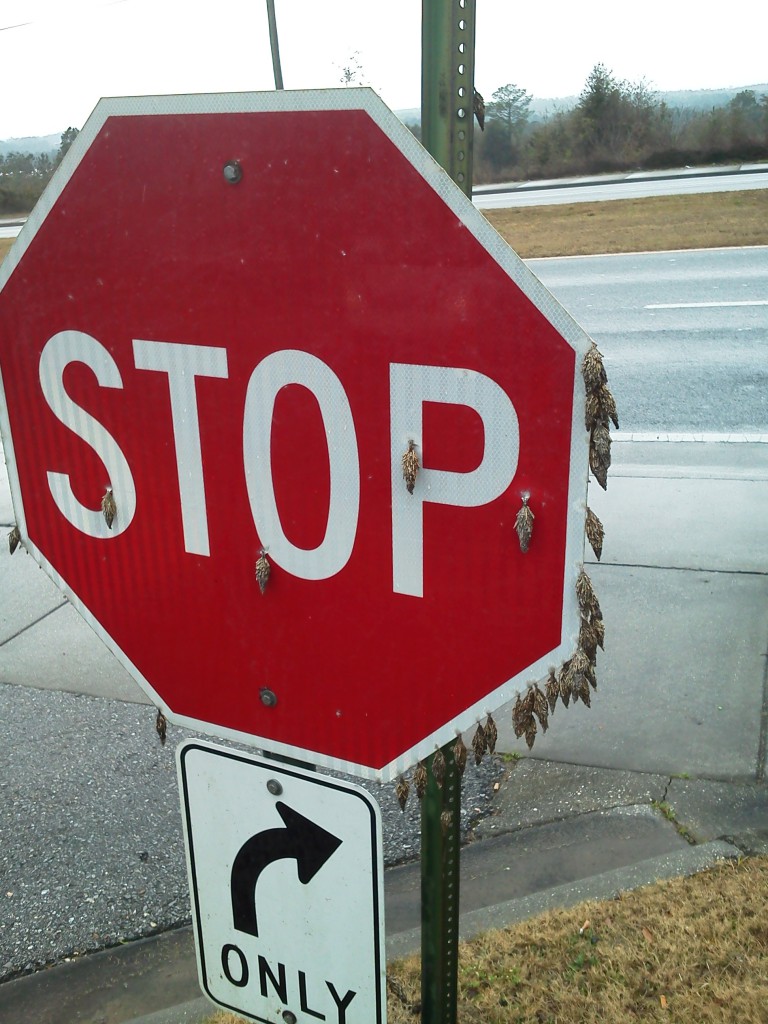
Bagworms on a stop sign
Northwest Florida is the most southern range of the common bagworm, Thyridoptgeryx ephemeraeformis, but the majority of the plants they feed on can be found here. Common host trees include Red Cedar, Live Oak, Maple, Elm and Pine. Other susceptible shrubs include Indian Hawthorn, Juniper, Arborvitae, Ligustrum and Viburnum.
Bagworms overwinter as a clutch of 500-1000 eggs wrapped in the leaves of the infested plant. In late spring the larvae hatch as tiny caterpillars that disperse to surrounding plants by spinning a silken thread and “ballooning” on the wind.
Once established on a host plant the young bagworms begin feeding and constructing a bag which is formed using pieces of twigs, leaves and silk.
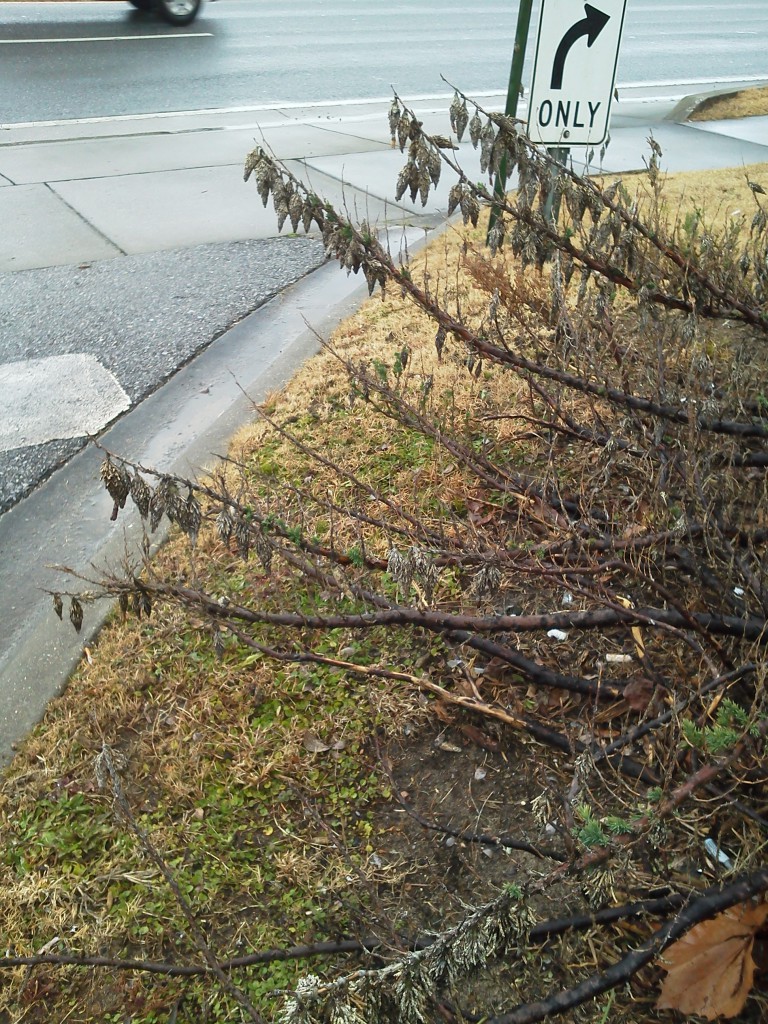
From then on, only the head and thorax of the female bagworms emerge from the foliage bag. She continually feeds on the plant, leaving it severely defoliated. As few as four bagworm larvae can cause a four-foot Arborvitae to be so damaged that it can’t ever grow enough foliage to return to a normal appearance. For four to sixteen weeks the caterpillars feed steadily. Once the larva has consumed enough food during the last instar, it attaches its bag securely with a thick silken strand to its host plant or nearby structure. The bagworm seals the posterior end of the bag, molts, and begins pupation. The bagworm’s 7-10 day long metamorphosis results in a moth. However, the adult female’s wings and appendages are reduced to mouthparts, legs and small eyes. She remains in a caterpillar-like state for a couple of weeks. She releases a pheromone that attracts the male. The male bagworm emerges as a free-flying, lacey, black moth that only lives one or two days; just enough time to mate with the female in her bag. Once mated the female then dies, mummifying around her eggs.
Bagworm populations can reappear in the same areas year after year. To control bagworms, mechanical methods and biological insecticides are the most effective practices. Hand-picking them from late fall to early spring and placing them in a bucket of soapy water or a sealed bag prevents new larvae from dispersing. Applying Bt, Bacillus thuringiensis, to the foliage is also an effective means of control when applied to new spring growth. This bacteria stops the feeding of all caterpillars, so be cautious about where it is used. Many desirable butterfly larvae can be harmed if the product lands on other larval plants.
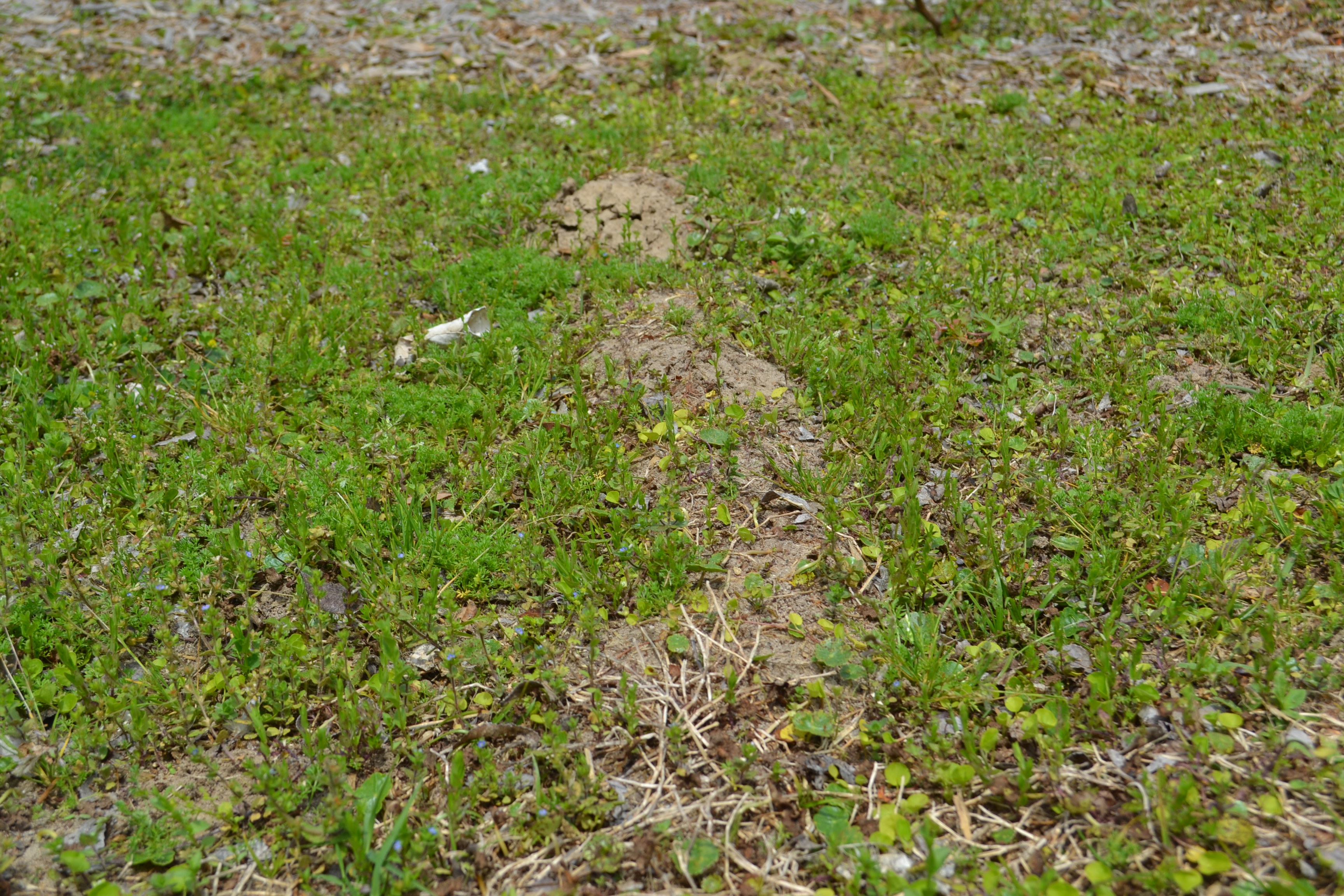
by Beth Bolles | Apr 15, 2014
How can an animal that does such much to help rid your lawn of pests be so hated by most homeowners? Such is the life of the mole.
The beneficial mammal is a soil dweller that tunnels through the soil, increasing aeration as it searches out a meal of beetle grubs, mole crickets, and slugs. Moles prefer loose soil and can tunnel more than 15 feet an hour. Moist soil brings the food source closer to the surface which in turn bring moles up to expose raised tunnels to homeowners. These tunnels are mostly cosmetic and show up easily in mulched areas and lawns with heavier weed populations. Most homeowners with a healthy, thicker lawn will rarely notice mole activity unless they encounter loose areas as they walk over the turf. These can easily be pressed back down with your foot.
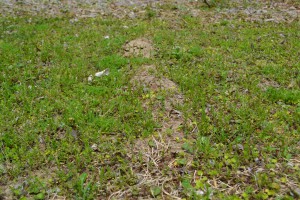
Mole tunnel in weedy area. Photo: Beth Bolles, UF IFAS Extension Escambia County
There are management techniques for moles which include traps and ridding the lawn of the food source. The best practices are to manage the turf through proper mowing, watering, and fertilizing to create a uniform, healthy cover. For the most part, mole management is not even required. Consider the benefits of the moles as predators and allow them to be a natural part of the landscape environment. For more information on moles read the University of Florida IFAS Extension publication.
by Matthew Orwat | Apr 8, 2014
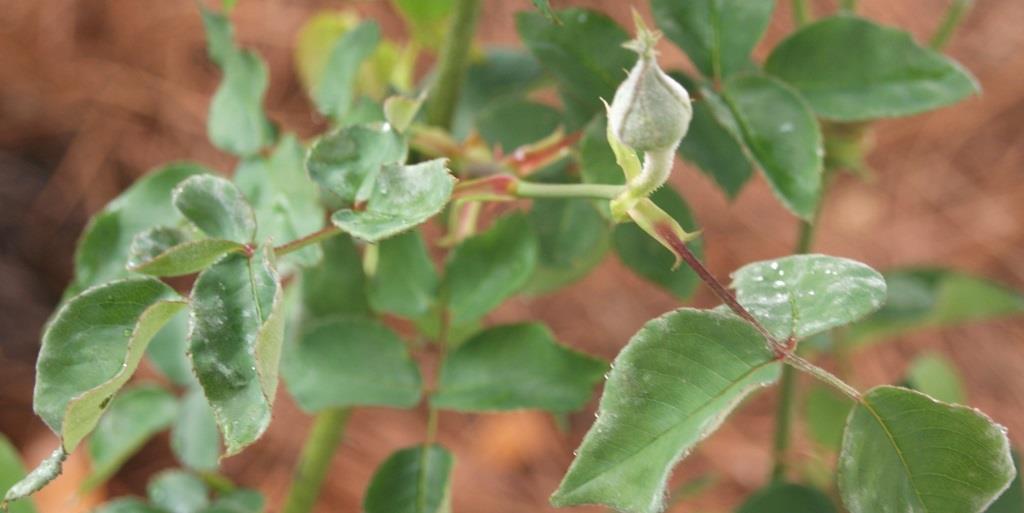
Powdery mildew on rose bud. Image Credit Matthew Orwat.
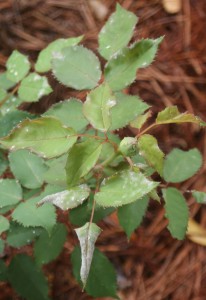
Powdery mildew on rose leaf. Image Credit Matthew Orwat.
This spring powdery mildew has been prevalent on many non-resistant cultivars of ornamental plants, particularly rose and crapemyrtle.
Ideal conditions for powdery mildew development, warm days and cool nights followed by rain, have been present for several weeks in Northwest Florida.
This fungus, which looks like powdered sugar and is caused by several different species, appears on new growth and causes distorted and stunted leaf and flower development. It grows in thin layers on the surface of leaves and reproduces by spores.
Mild cases are of little concern, as most plants will grow out of it once environmental conditions change to be less favorable for development of the pathogen. Severe cases can cause distorted growth, leaf drop and flower destruction.
In these cases, fungicide application will protect new growth from this disease. Some lower toxicity fungicides that have been shown to have effectiveness on powdery mildew include neem oil and potassium bicarbonate (otherwise known as Baking Soda).
Sulfur can be used, but cannot be applied when temperatures reach above 90 ° F. Other chemical fungicides, including those containing myclobutanil, or azoxystrobin can be used but products obtained must be labeled for ornamental use. Remember, the label is the law.
Many disease resistant cultivars of rose and crapemyrtle exist, please follow the links provided for more information.
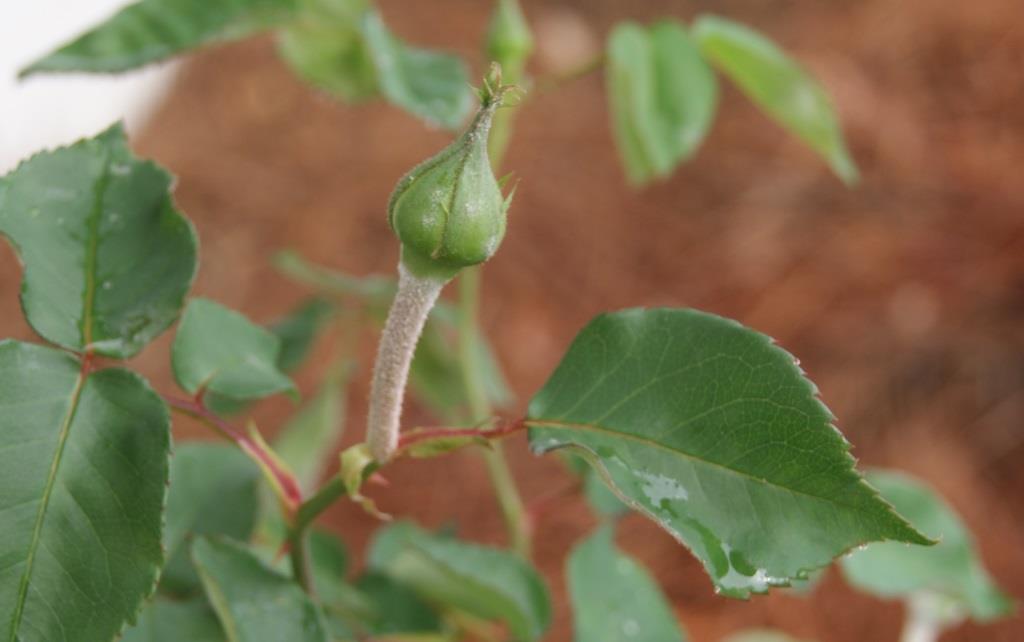
Powdery mildew on rose petiole. Image Credit Matthew Orwat.
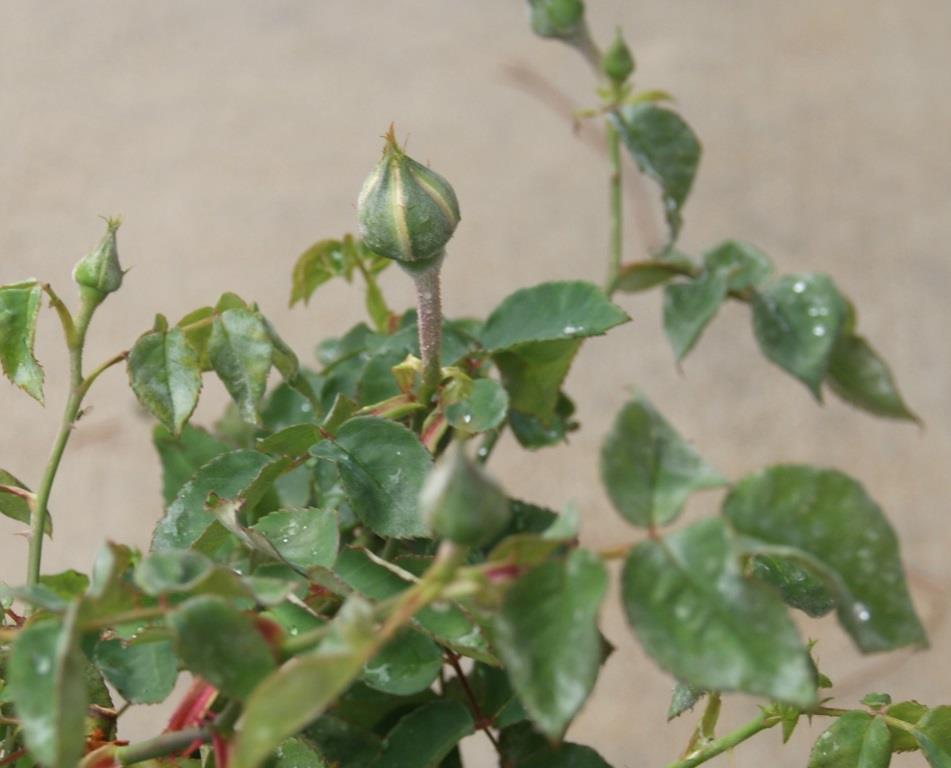
Powdery mildew on rose. Image Credit Matthew Orwat.












